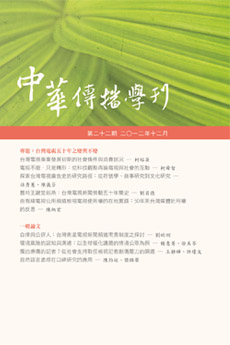 閱覽人數: 19
閱覽人數: 19
December
2012
No. 22
台灣電視五十年之變與不變
To Be or Not to Be: Taiwan TV’s 50th Anniversary頁數:99 - 130
作者(中)
陳炳宏
作者(英)
Ping-Hung Chen
關鍵詞(中)
公用頻道 ; 公共論壇 ; 有線電視系統 ; 系統經營者 ; 媒體近用權
關鍵詞(英)
public access channel ; public forum ; cable television system ; cable system operator ; right of access to media
中文摘要
50年前(1962年)台灣首度出現電視服務,1976年廣播電視法立法保障媒體接近權,但直到1993年通過有線電視法才真正落實電視使用權,顯示媒體近用權的在地實踐並非一步到位。本研究分析全台63家有線電視系統共35個公用頻道之節目內容及來源,以瞭解媒體近用權在地實踐的真相。研究發現,經營公用頻道的有線電視系統業者是最大的節目近用者;其次是中央與地方政府的「政府機關」;接著是「人民團體」,而純「個人」近用量根本微不足道。研究結果顯示,原本應屬於公共論壇的公用頻道,業者及政府即占有超過三分之二的近用時段,近用來源如此的傾斜分布,實不符合公眾近用媒體的公用頻道設立精神。
英文摘要
This study analyzes the contents and sources of 35 public access channels belonging to 63 cable television systems in Taiwan to examine the degree of actual implementation of local right of access to media. This study found that cable television system operators of public access channels have the greatest degree of access to programming. Government agencies of the central and local government were among those in second place and civil associations were ranked third, whereas purely personal access was negligible. These results show that over two-thirds of programming time that are intended for public forums are used by cable system operators and the government. This biased distribution of sources of access is not in accordance with the spirit of public rights of access to media on which public access channels were founded.